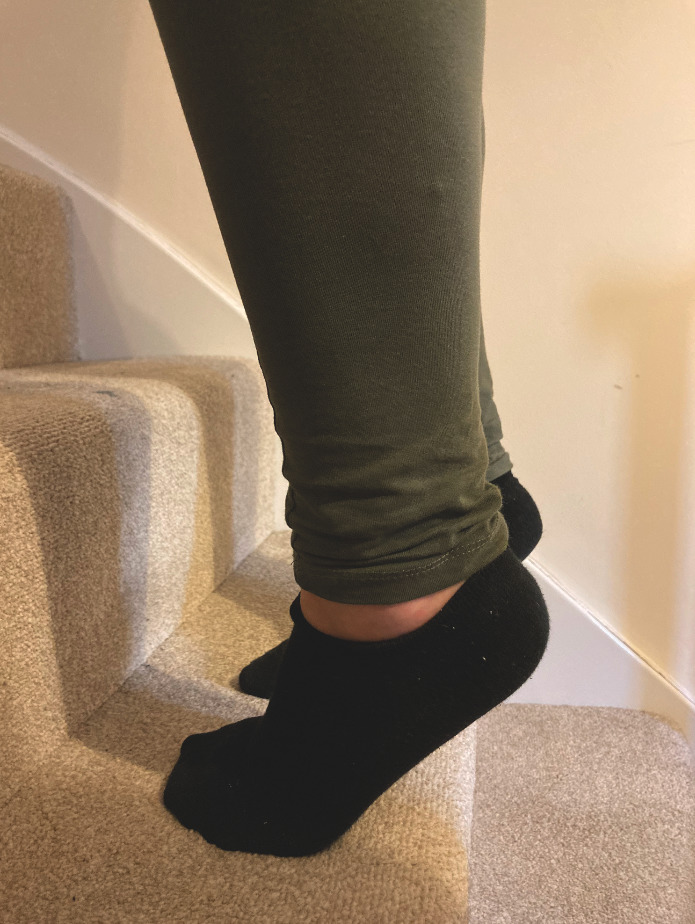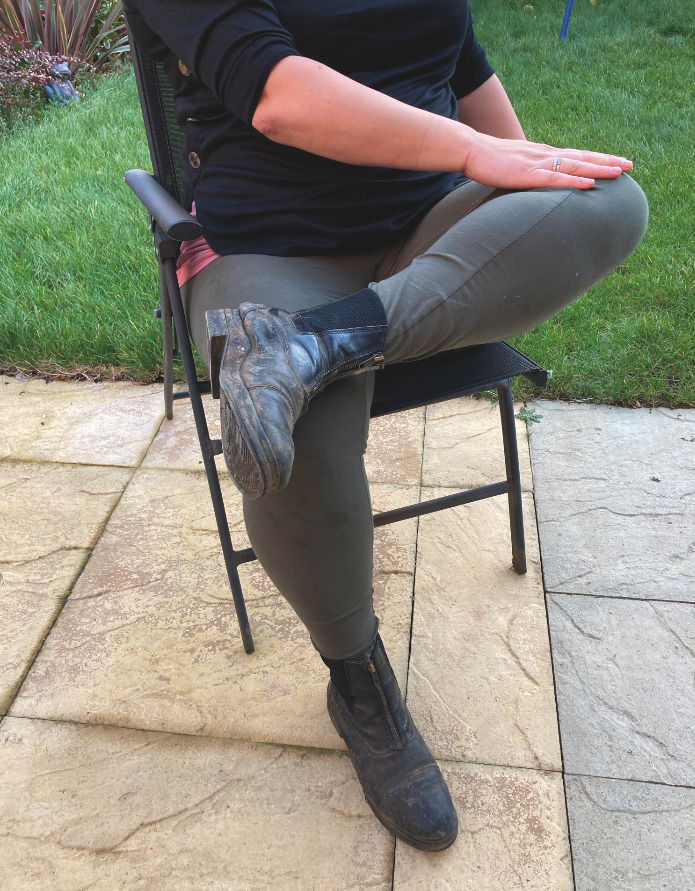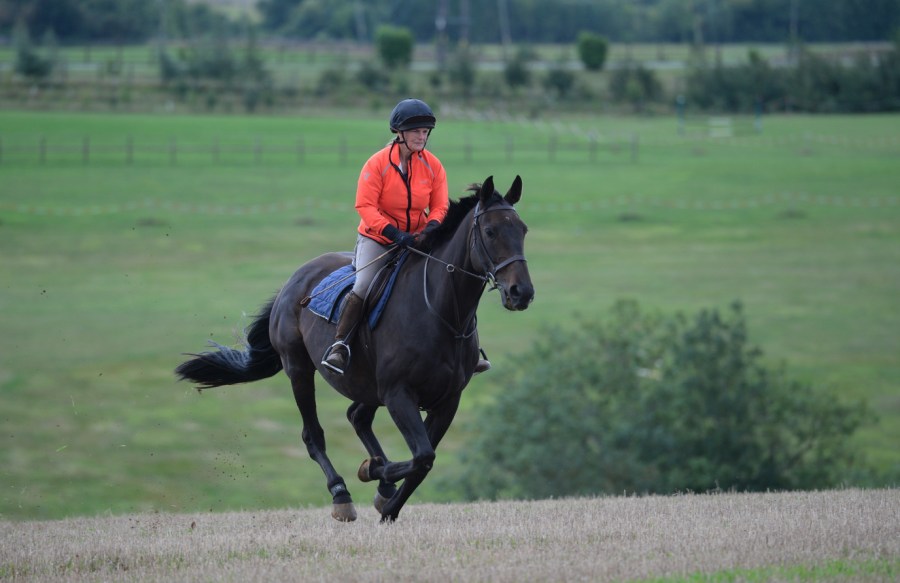In partnership with Wintec Saddles
Spending long periods in the saddle as you work towards your #Hack1000Miles goal can cause rider body aches and pains. Advanced Equipilates biomechanics trainer Claire Dryden shares three exercises to help increase your flexibility and relieve sore hips and stiff ankles.
1 Improving flexibility
Pilates exercises help us all with our day-to-day activities, as well as riding, so I recommend you do lots of it. Without seeing a rider in person it is difficult to give personalised exercises, but generally, I recommend you start by improving your pelvic alignment and function, which will improve your hip mobility.
Exercise: the spine curl
- Lie on your back, hands by your sides with your knees bent and feet hip width apart.
- Imagine you have a Malteser on top of your pelvis. Roll the Malteser towards your tummy button and then away.
- Next, think of peeling the spine off the floor into a bridge position, so you have a straight line from the bottom of your shoulder blades, through your hips to your knees.
- Your hands should be pressing into the mat, making sure you keep your pelvis level.
- Repeating while thinking about your breathing will open the front of your hips and activate the muscles around them.
2 Relieving stiff ankles

Raise and lower your ankles on the edge of a step
Stiffened ankles are a common issue for riders. We need to remember our bodies are absorbing forces that are sent upwards from the horse as they move. Our ankles form part of this shock-absorbing system, which also includes other joints, particularly our knees, hips and spine.
Ankles are an incredible joint, allowing movement in several directions. When our stirrups are shorter, which many people choose to do for hacking, we need the ankles to flex more. If we think of connecting the big toe and little toe joints with the stirrup iron, this will allow the ankle joint to move a little, thus acting as a shock absorber.
Exercise: on the edge
- Stand on a step with the ball of your feet near the edge, connecting big and little toe joints. Raise and lower your heels slowly in a controlled manner, focusing on your balance.
- Next, add small squats, as if doing rising trot, focusing on ankle control.
- Progress the exercise by standing on an unstable platform, such as a wobble board then a jumping pole. Notice how the soft, shock-absorbing ankle helps other joints soften in the body, particularly the hips.
3 Help for aching hips
The piriformis muscle — a muscle located deep in the buttock behind the gluteus maximus — is only small but, alongside other muscles, it has a huge influence on your pelvis function and symmetrical balance in the saddle.
You may feel one leg is longer than the other, your seat bones feel unequal or feel stiff down one side of the back, resulting in your body developing compensatory patterns.
With Equipilates, we follow a specific screening process to prescribe exercises that target intrinsic biomechanics, specific to your needs.
Exercise: the chair

Do the chair exercise to improve muscle function in your pelvis
This exercise will help to wake up and normalise the muscles to allow improved muscle function in the pelvis.
- Sitting in a chair, place your left ankle over your right thigh, just above the knee. Notice how high your knee is. Compare the other side.
- Place your right hand on top of the knee. Press your ankle into your thigh, using 20% pressure. You will feel the knee lift upwards towards the hand.
- Your hand is there to prevent the knee lifting and you will feel an isometic (static) muscle contraction. Hold this for 20 seconds.
- Repeat four times on each leg. That’s four time 20 seconds with 20% pressure.
- Now compare the height of the knees in this position, along with how you feel standing and walking.
- Do this exercise four times a day, including before you ride.
- If it helps, I recommend finding an Equipilates biomechanics trainer near to you for further assistance.
This content is brought to you in partnership with Wintec Saddles, durable, comfortable, easy-care, weather-proof saddles for everyone.









